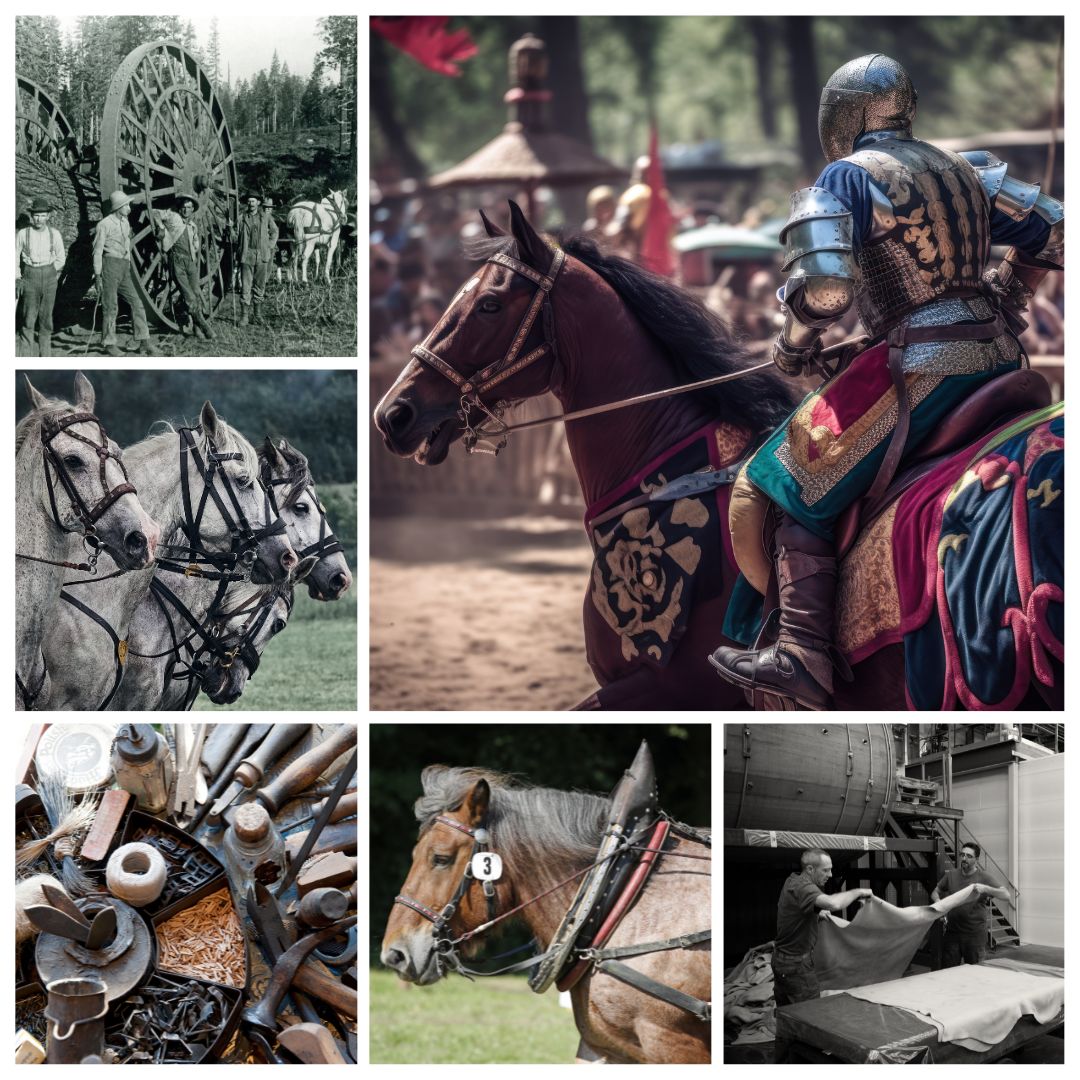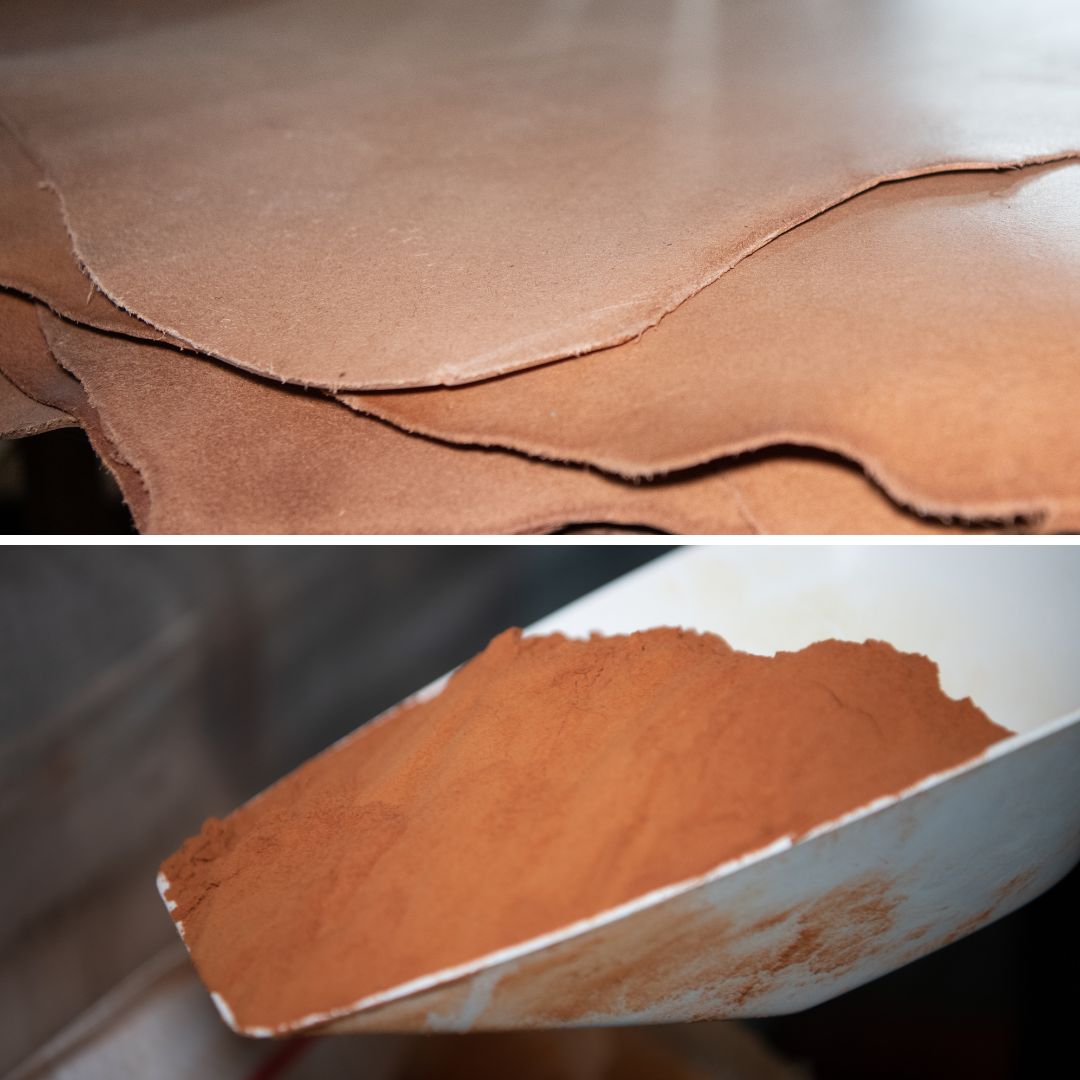Saddlery is a time-honored craft that encompasses all the techniques, knowledge and skills required to manufacture and repair equestrian articles, including accessories and equipment used for riding. Today, the saddler's trade has changed a great deal. Its origins date back to the 13th century, and bear witness to a rich history and significant evolution, from medieval times to the Industrial Revolution. But how has the profession evolved over time?
The history of saddlery
Saddlery in the Middle Ages
 Animal power in agricultural work is the origin of the saddler. At the time, these craftsmen were known as "bourreliers", skilled at making strong, comfortable equipment for animals. However, their history really began in the Middle Ages, a period marked by the development of craftsmanship and the rise of the chivalry. Medieval saddles, built from leather thick and resistant, were often richly decorated and designed to offer comfort and safety to riders.
Animal power in agricultural work is the origin of the saddler. At the time, these craftsmen were known as "bourreliers", skilled at making strong, comfortable equipment for animals. However, their history really began in the Middle Ages, a period marked by the development of craftsmanship and the rise of the chivalry. Medieval saddles, built from leather thick and resistant, were often richly decorated and designed to offer comfort and safety to riders.
Saddlery craftsmen in the Middle Ages used specific methods to manufacture saddles and saddlery accessories. Making leather required skills such as precise cutting of pieces, strong stitching with linen or silk threads, and the use of specialized tools such as awls, punches and dies to embellish the leather.
Knights attached great importance to their saddles (equestrian leather) and equipment, often regarding them as valuable objects handed down from generation to generation.
Saddlery in the Renaissance

While in the Middle Ages, the saddler's trade was characterized by its versatility, the Renaissance marked the beginning of its specialization. In 1577, the French king Henri III stipulated that any craftsman working with leather had to master every part of a carriage, from the carriage parts to the horse's fastening system, in order to obtain the status of saddler. This required several years' apprenticeship with journeymen. In this way, the trade evolved from a generalist know-how to a highly specialized profession.
The Renaissance period was characterized by a keen interest in art and design, which also had an impact on saddlery. This interest manifested itself in the use of motifs inspired by Renaissance art, such as floral motifs, arabesques and depictions of mythological scenes. Saddlers worked in collaboration with renowned artists and sculptors to create functional crafts that were true works of art.
The art of horsemanship also evolved. Riders adopted a more upright and elegant posture in the saddle, inspired by the artistic and cultural ideals of the time. Saddlers adapted to these new demands, creating saddles with straighter pommels and flatter seats.
At the same time, new equestrian accessories were introduced during this period. The spursfor example, were developed to enable riders to communicate more precise indications to their mounts.
Saddlery in the 18th and 19th centuries

The trade is adapting to changes in society and its expectations. The rise in demand for saddlery products can be explained by the boom in equestrian activities. Saddlers had to meet the needs of modern riders and their mounts by creating products that were both aesthetically pleasing and functional.
With the emergence of the saddle saddles became lighter, shorter and flatter, allowing the rider to sit closer to the horse in a more upright position. Saddles were often made of fine leather and were less ornate than those of the Renaissance period.
The influence of military equipment also played an important role at this time. Military weapons and cavalry were essential users of saddlery equipment. Advances in warfare techniques influenced saddle and harness designs. harnesses. Military equipment, such as cavalry saddles and war harnesses, were specially designed to meet the needs of mounted soldiers, emphasizing simplicity and functionality.
The evolution and professionalization of saddlery
The evolution of the saddler
Saddlery is constantly evolving, combining traditional know-how with innovation.

This age-old craft is marked by technical advances, but also by changes in the materials used. Thanks to new techniques for leather tanningthe saddler works with more resistant leather. Saddlers are perfecting their skills in cutting, sewing and assembly. The same applies to technological developments. Computer-aided design and manufacturing tools (CAD - CAM) improve product creation and assembly.
Time and experience have given saddlers a better understanding of the rider and his mount. Saddles and equestrian accessories are therefore adapted to the horse's anatomy and comfort. The emergence of leisure riding and equestrian sports such as show jumping, dressage and polo has been a springboard for saddlery.
The emergence of travel accessories has also had a significant impact. Travelling on horseback has become increasingly popular, especially for long distances. This trend has led to the development of saddlery accessories specially designed for horseback travellers, such as saddlebags, suitcases and toiletry kits.
The professionalization of the saddler

Saddlery has become a specialized profession for a number of reasons. Firstly, the importance of the horse in society has created a growing demand for suitable equipment. The role of the horse is crucial, whether in wartime, as transport, for agricultural work, or simply for leisure. Secondly, the technical expertise required to manufacture leather goods for horses led to the emergence of specialized craftsmen.
The passing on of knowledge from generation to generation has helped preserve these specialized skills. In addition, demand for high-quality saddlery products has strengthened the profession, as has adaptation to changing needs and styles in the equestrian field. As a result, specialist saddlery craftsmen continue to play an essential role in creating bespoke equipment for riders and horses.
The different types of professions

- Saddler The saddler works with saddlery and leather to make harness parts for working draft horses (harnesses, harness collars, etc.). The term used to differentiate the saddler, who worked in the countryside, from the saddler, who worked in the city.
- Leather goods saddler The leather goods saddler manufactures items such as wallets, handbags, belts and leather accessories, using traditional saddlery techniques.
- Upholsterer The upholsterer specializes in making upholstery and padding for saddles and other upholstery equipment, as well as trimming the interiors of luxury and vintage cars and boats. His job is to create comfortable cushions and to manufacture and install seats, using materials such as felt, foam and horsehair to meet comfort needs, while providing a luxurious, meticulous aesthetic.
- Harness saddler The harness saddler designs all the leather parts essential for driving a carriage and equipping a horse, including saddles, harnesses and harnessing accessories. He creates made-to-measure products, taking into account the horse's anatomy, the discipline practiced and the rider's preferences. He also specializes in repair and replacement of leather saddlery.




